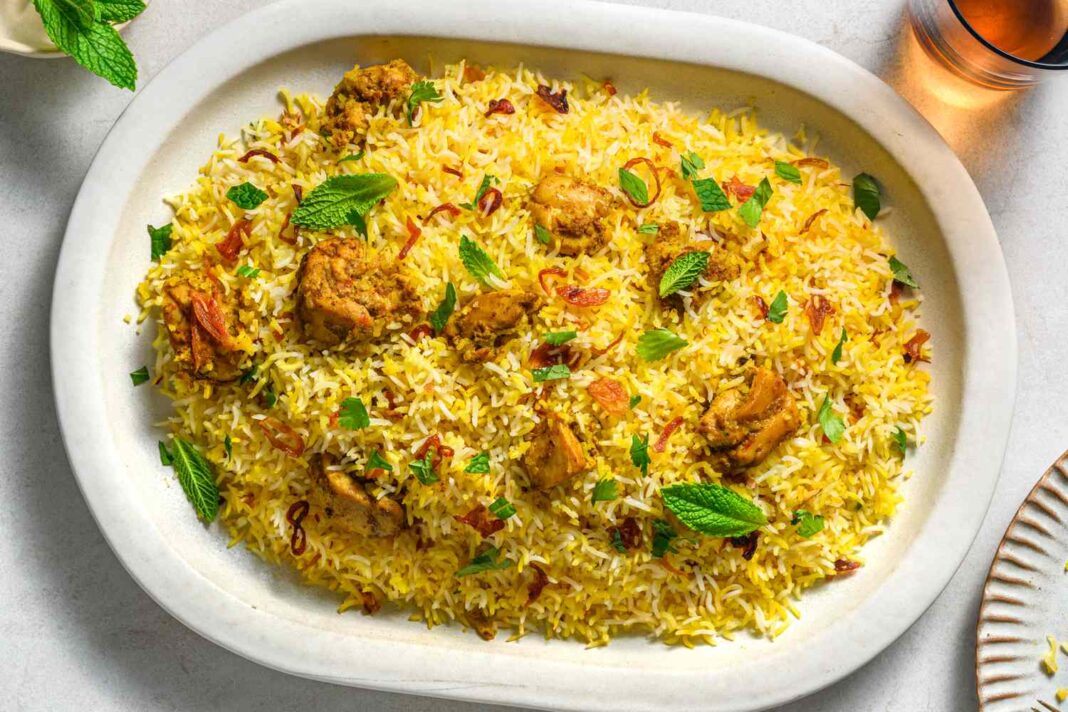With the influx of immigrants from various cultural backgrounds to Canada, there has been an upsurge in the desire for ethnic food among the newcomers.
The Canadian food industry serves people from all backgrounds, giving space for growth in restaurants serving ethnic cuisines. According to a Concordia University research by Rhiannon Herbert, there has been an increase in the number of restaurants serving Biryani, a popular Indian dish.
The culinary landscape in Toronto caters to a wide range of tastes.
Here are a few places famous for their biryani in and around the GTA:
- Pariwar Restaurant: 1732 Lawrence Avenue East, Scarborough, ON.
- Hyderabad Palace: 4810 Sheppard Avenue East, Scarborough, ON
- Chandni Chowk: 1426 Gerrard St E, Toronto, ON.
- BBQ Tonite: 5165 Dixie Rd, Unit 5, Mississauga, ON.
- Bahar Biryani: 1847 Lawrence Avenue East, Scarborough, ON.
If you are one of those people who love to experiment in the kitchen, here are some links so you can whip up a delicious batch of biryani.
Most Indians love biryani. With its numerous variations, one can find something for everyone.
Although it may look like it originated in India, biryani actually came from West Asia. The dish is made of rice, typically fried first.
It is believed that the dish was brought to India by Turk-Mongol conqueror Timur in 1398. Back then, his soldiers were believed to have been served an earthen pot full of rice and spices by the palace chefs.
Another legend states that the dish was brought to India’s southern coast by Arab traders. In Tamil literature, it was known as Oon Soru and was made with various spices and rice.
It is believed that when Mumtaz, Timur’s wife, visited the barracks, she noticed that the soldiers were not eating properly. She then recommended a special dish that combined rice and meat, which was served with a side of rice.
The Mughal leader then ordered the chefs for the special dish that would provide the soldiers with balanced nutrition. The rice was then fried in ghee and the meat and spices were added before the mixture was heated up over a wood fire.
The rulers of various regions were known for their fondness for the subtle flavors of biryani. They were also responsible for popularizing variants of the dish.
The perfect biryani requires a lot of patience and a certain technique. This dish is usually made using a slow-burning oven or dum pukht. The combination of the meat and rice is then steamed in the pot until the rice is tender and the juices are absorbed.
Spices are also used to make a good biryani. Some recipes call for only limited use of spices, while others involve numerous spices. Eggs, fish, and crab are also commonly added.
In the north, long-grain brown rice is commonly used to make biryani. However, in the south, the dish is still made with local varieties of rice such as zeera samba, kaima, and jeerakashala.
In the north, the meat is often layered with rice in a handi. A handi is a copper or clay (pot) cooking basin that originated in the Indian subcontinent. It’s mostly used in north Indian, Pakistani, and Bangladeshi cuisines. In the south, it is commonly prepared with beef and rice in a handi.
Biryani is a complete dinner that can be enjoyed by everyone because there are so many versions to select from. Because of the quick preparation, it’s also a terrific way to commemorate a special occasion or have a relaxing Sunday lunch.





